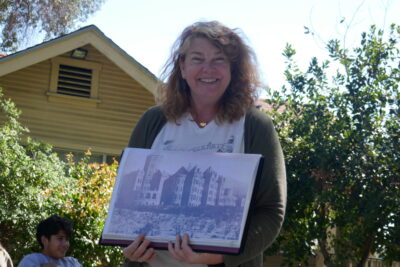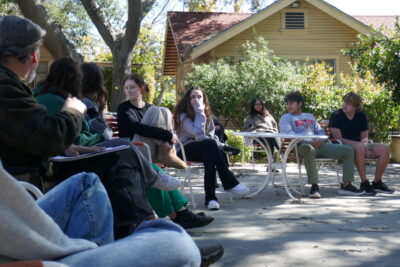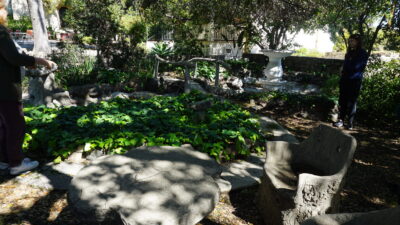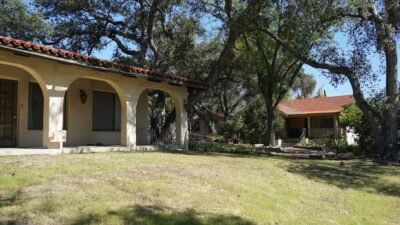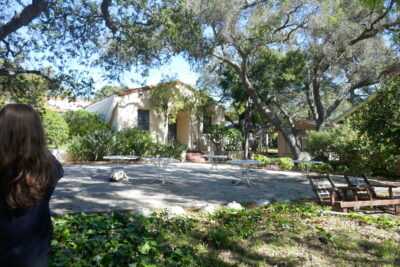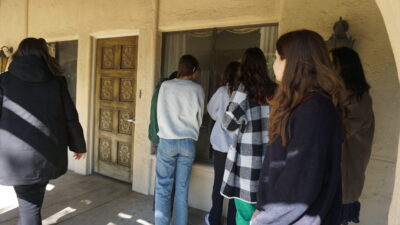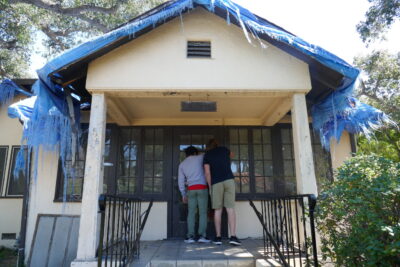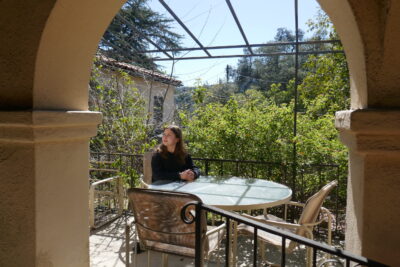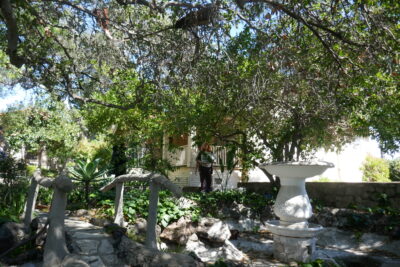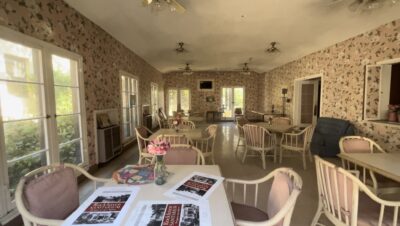In March, 11th and 12th Grade students in Social Studies 501: The History of Science, Technology, and Medicine in the United States visited the Rockhaven Sanitarium Historic District in Glendale, California. Students in the course are working through a unit on mental health in the first half of the 20th century and studying how “medical and scientific experts used institutions to define and police the boundaries of what is considered ‘normal’ behavior,” says Teddy Varno, Social Studies 501 instructor and chair of the Social Studies Department at the secondary school. In this unit, students delve into stigmas surrounding mental health in the early 20th century and explore how these stigmas further perpetuated the illnesses themselves.
Finding a Haven at Rockhaven
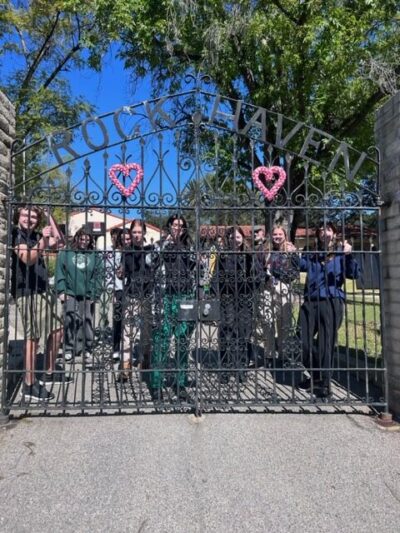
“What I think most of them found was that Rockhaven, in interesting ways, defied these expectations, largely because Agnes Richards (the founder) had such a different philosophy around her patients and their possibility of reintegrating into society,” Teddy explains. Students are able to reflect on their experience and the dichotomy between most early 20th-century prison-like asylums and Rockhaven—a feminist sanitarium, rooted in dignity and dedicated to providing reliable and compassionate healthcare to women.
“There were so many different illnesses that were put in the same category and treated the same. I feel like each person deserves their own treatment in their own way,” shares Emmy ‘24. She and her classmates are exploring the cost of emerging mental health stigmas and the unregulated and inhumane standard of care in facilities at a time in history when so little was understood about mental illness. Emmy further describes how Rockhaven felt like a “safe” and “positive” space. Dean ‘24 says “one of the most important things we’re learning is the perspective of mental health. It was so unbelievably stigmatized… a story like The Yellow Wallpaper, which is one of the first writings depicting mental health, is so broad in its depiction [of mental illness] that you can make your own inferences on what conditions she [the narrator] actually had.” During their visit, students were shown a list of reasons why women were committed, including “disagreement with their spouse over religion or politics” and “non-compliance.” Riley ‘24 explains that “divorce was expensive and risky, so many men would have their wives committed instead of [separating]. There didn’t need to be a reason.”
Greta ‘23 recognizes the way these “systems of authority” were used to control people. “We have been learning a lot about medical authority and the rights and autonomies of people who were receiving treatment… [and] how these systems of authority were used to… silence people who did not fit into a certain mold.” Rockhaven was different. “During this unit when all we were hearing about were these nightmare asylums, we were able to see the better alternative at Rockhaven. It was very educational because it wasn’t what we expected. This was a sanitarium for women, by women,” she adds. Diego ‘24 shares a similar sentiment. “After looking at the institutional ways stigmatization was perpetuated in America, we decided to look at a sanitarium as a very good source of the darkest aspects of America at this time. But, we ended up at a sanitarium that was feminist and in opposition [to] a lot of these beliefs. It offered autonomy and freedom and went against the grain of medical professions at the time.”
It made me really admire how much time and effort was put into building up the nature of Rockhaven. There was a distinct difference in the treatment there, and it had its own way of pushing forward this super progressive handling of mental illness.
Dean '24Dean ‘24 admires the work that went into Rockhaven’s creation and points out founder Agnes Richards’ extremely progressive approach to mental health treatment and bold stance on healthcare. “Contrasting mental health asylums at the time with Rockhaven was such an eye-opener. It made me really admire how much time and effort was put into building up the nature of Rockhaven. There was a distinct difference in the treatment there, and it had its own way of pushing forward this super progressive handling of mental illness.” As unconventional as Richards’ philosophy was at the time, it worked. Dean ‘24 points out how family members and outsiders were shocked to see such positive outcomes, while Diego ‘24 says that “they focused on keeping patients’ minds on the present—they had gardening classes and nutrition courses. They’d learn something new every day. It was such a better approach to mental health.” The students also comment on the extensive research Agnes Richards’ put into the sanitarium—even testing “color theory” in hospitals to measure its effect on patients’ happiness before painting the walls in her facility.
The students discuss that, despite Rockhaven’s innovative approach, it lacked a sustainable business model and accessibility to the wider community. Diego ‘24 points out that with many of the corporate, prison-like institutions only thirty minutes away, class and socioeconomic position played a large role in a person’s placement and subsequent care. Natalie ‘23 comments on this disparity too. “I was expecting to go and feel scared, but it was really beautiful and looked like a collection of homes…there were brick paths, trees, and Spanish-style buildings. But this was not the norm, and how many people actually had access to that kind of quality care?” Greta ‘23 explains how Rockhaven’s wide-open courtyards and green areas might be idyllic but lacked profitability, despite such high premiums. “Real-life places need to exist that can hold enough people to make [other] people money.” In fact, students discuss how Rockhaven had to rely on Agnes Richards’ innovative investment strategies, even using the facilities as a feminist hub, teaching other women in the community how to invest money, in order to stay afloat.
The Social Studies 501 class now recognizes how revolutionary Agnes Richards’ mission was in contrast to the emerging methodologies in the early 20th century. She pioneered a courageous movement using nature, kindness, and empathy in mental healthcare at a time when inhumane treatment was the norm. And yet, while there have been a great number of advancements since Rockhaven closed its doors in 2006, there is still so much we as a community can learn from Agnes Richards and how her practices informed future work in the mental health field. “There are still a lot of issues in the treatment system,” Chloe ‘24 reflects, adding that “it didn’t revolutionize the treatment industry altogether. There are nice places like Rockhaven, but it comes at a price. Equal treatment is still not accessible to all.”
